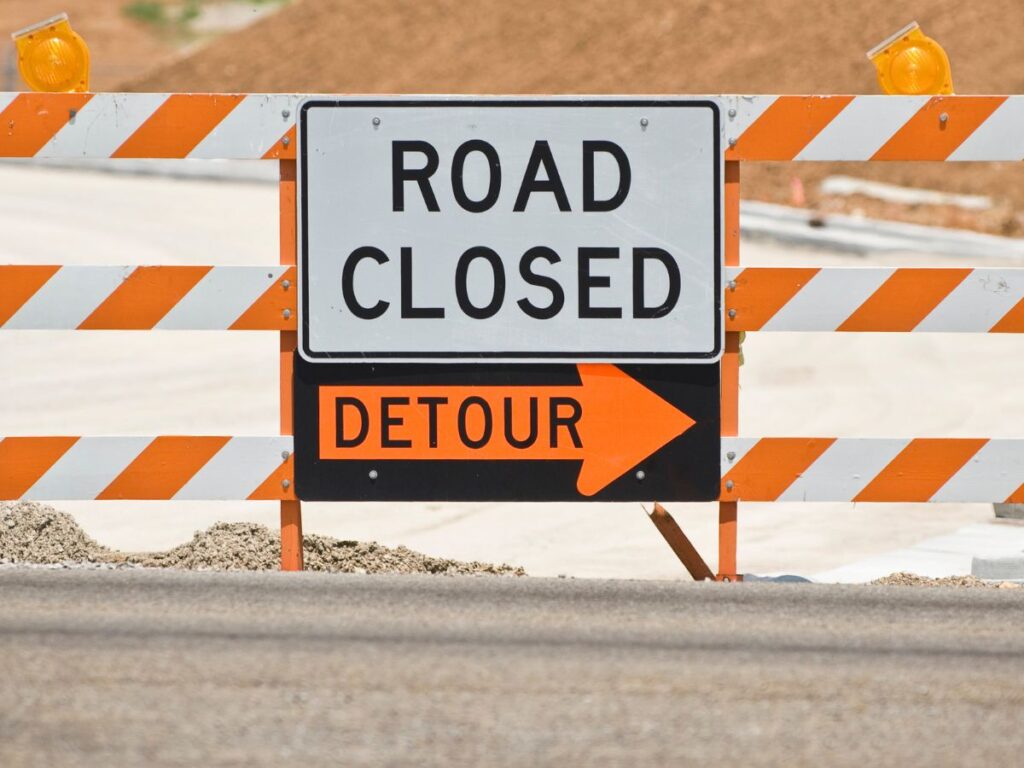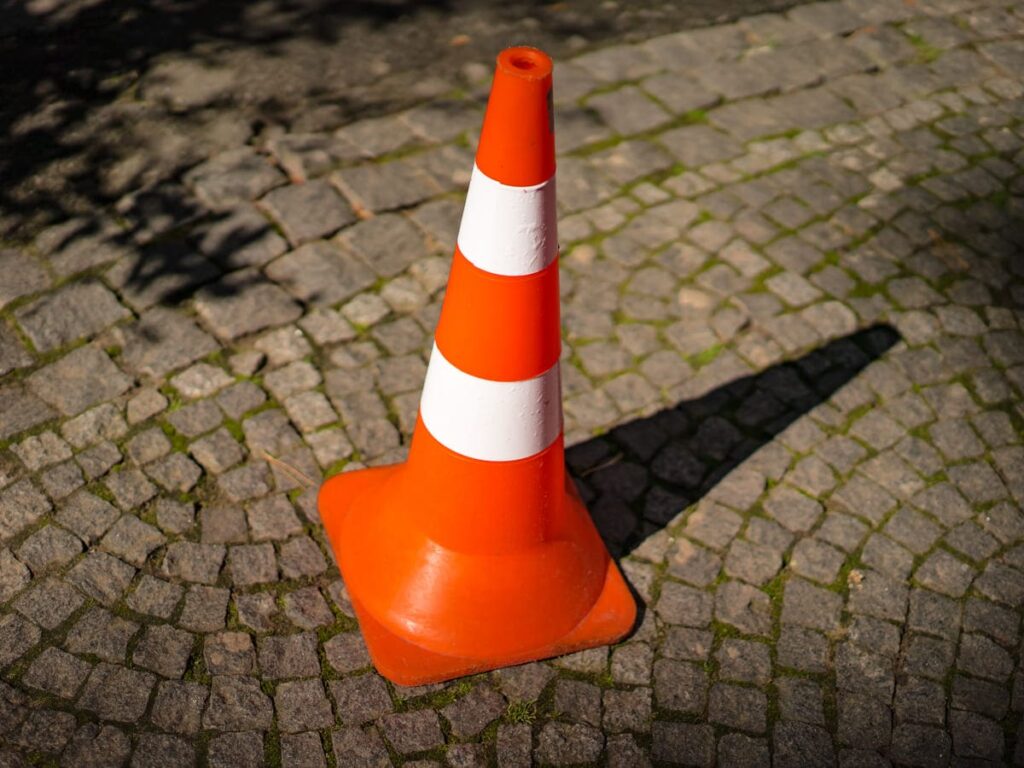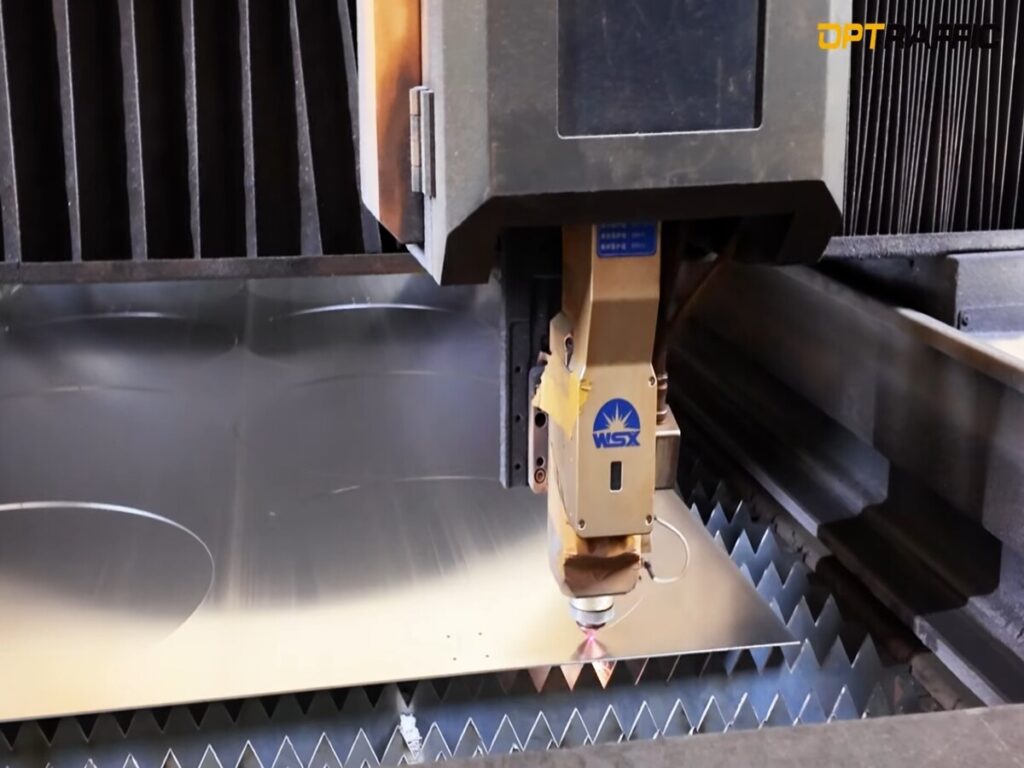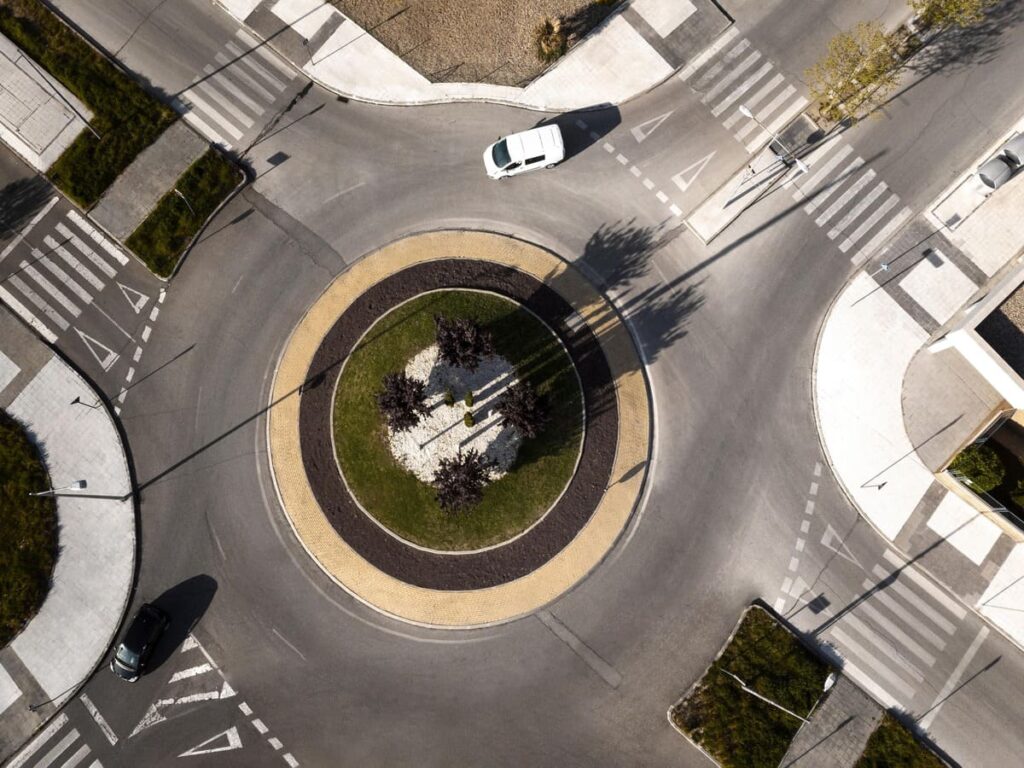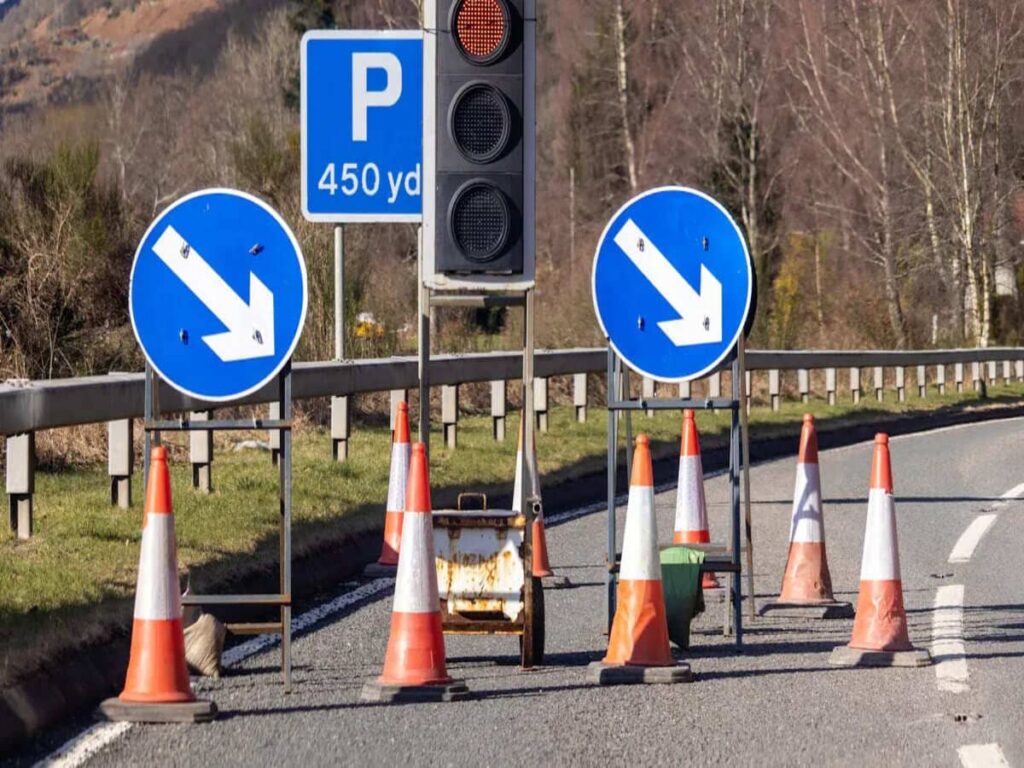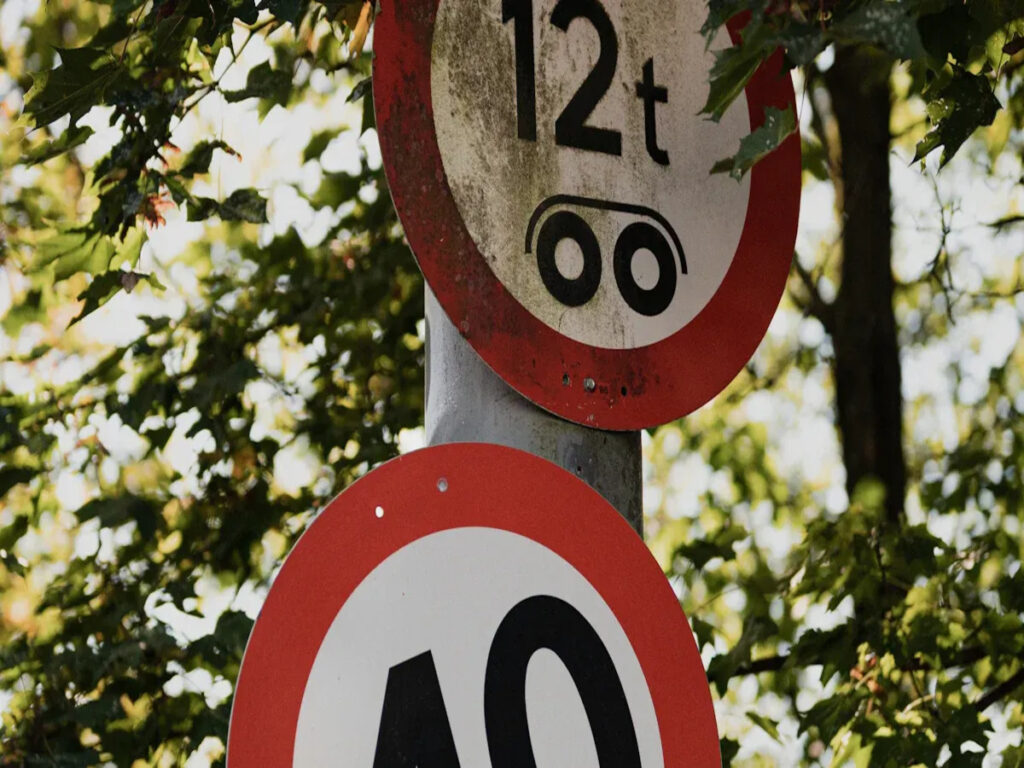
O preço das folhas de alumínio para sinais de trânsito depende da espessura, Tipo de liga, tamanho, e pedidos de quantidade. O alumínio oferece manuseio leve, forte durabilidade, e resistência ao clima severo. Municípios e contratados usam essas folhas para sinais de rodovias, Limites de velocidade, e avisos de construção. Espessuras comuns como 0.080 polegada ou 1/8 Inch Suit A maioria das aplicações ao ar livre. A tabela abaixo mostra como a espessura e a liga influenciam o custo por pé quadrado:
| Grossura (polegadas) | Tipo de liga | Tamanhos típicos (ft) | Preço por pé quadrado (aprox.) |
|---|---|---|---|
| 0.050 | 3003-H14 | 1×2, 2×2, 2×4, 4×4, 4×10 | $0.60 – $0.75 |
| 0.063 | 3003-H14, 5052-H32, 6061-T6 | 1×2, 1×4, 2×2, 2×4, 4×4, 4×8, 4×10, 5×10 | $0.90 |
| 0.080 | 3003-H14, 5052-H32, 6061-T6 | 1×2, 1×4, 2×2, 2×4, 4×4, 4×8, 4×10, 5×10 | $1.13 – $1.20 |
| 0.090 | 3003-H14, 5052-H32, 6061-T6 | 1×2, 1×4, 2×2, 2×4, 4×4, 4×8, 4×10 | $1.29 – $1.30 |
| 0.100 | 6061-T6 | 1×4, 2×2, 2×4, 4×4, 4×10 | $1.45 |
| 0.190 (3/16) | 6061-T6 | 1×1, 1×2, 1×4, 2×2, 2×4, 4×4, 4×8, 5×10 | $2.66 – $2.70 |

Compreender esses fatores ajuda os compradores a fazer escolhas econômicas e avaliar o valor a longo prazo para projetos de sinais de trânsito.
Por que alumínio para sinais de trânsito
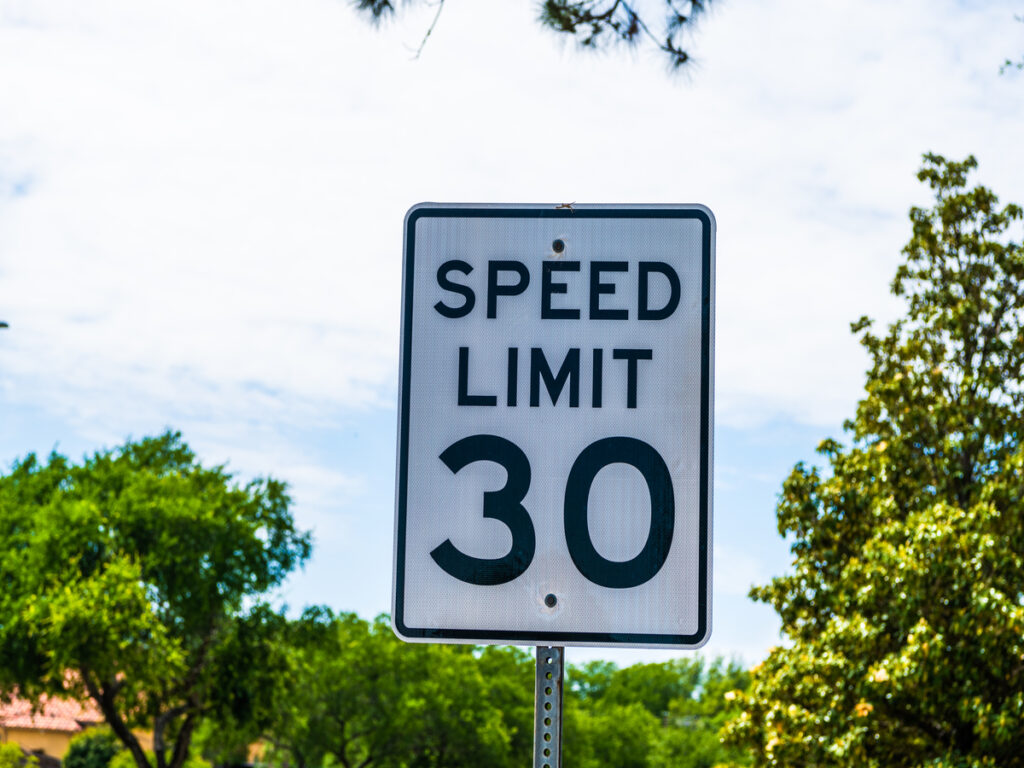
Leve e durável
O alumínio é uma melhor opção para sinais de trânsito. É forte, mas não pesado. Isso facilita a movimentação e a colocação. O aço é muito mais pesado que o alumínio. As folhas de alumínio vêm em muitas notas e espessuras. Isso permite que as pessoas escolham o que funciona melhor para cada sinal. A tabela abaixo mostra quanta alumínio mais leve é do que aço. É por isso que cidades e rodovias usam tanto:
| Material | Espessura típica (polegadas) | Peso por pé quadrado (Libra) |
|---|---|---|
| Alumínio | 0.080 | 1.08 |
| Alumínio | 0.125 | 1.78 |
| Aço | 0.080 | 3.26 |
| Aço | 0.125 | 5.10 |
O alumínio não desaparece, rachadura, ou dobrar facilmente. Sinais feitos com isso permanecem claros e fáceis de ler por anos. Você pode cortar, furar, ou moldar o alumínio sem problemas. Isso torna bom para sinais personalizados.
Resistência ao tempo
O alumínio tem uma camada especial que impede que ele enferruja. Isso ajuda os sinais a durar através da chuva, neve, e calor. Revestimentos UV mantêm as cores brilhantes e brilhantes. Mesmo depois de anos ao sol, Os sinais ainda parecem bons. Os sinais de alumínio duram sobre 7 para 12 anos fora. Eles duram mais do que placas ou sinais de madeira. Eles também precisam de menos consertar. O alumínio não é danificado pela água ou grandes mudanças de temperatura. Isso o torna ótimo para lugares com clima difícil.
Resistência climática do alumínio significa menos substituições e menores custos de manutenção ao longo do tempo.
Aplicações comuns
Cidades e construtores usam folhas de alumínio para muitos tipos de sinais de trânsito. Estes incluem sinais de parada, sinais de rendimento, Sinais de zona escolar, e flechas. A espessura depende do tamanho e do uso do sinal:
- 0.040″: Bom para sinais pequenos ou de parede.
- 0.063″: Usado para sinais médios nas postagens.
- 0.080″: Melhor para lugares grandes ou ventosos.
- 0.100″ e 0,125″: Escolhido para sinais muito grandes ou difíceis.
A maioria dos sinais usa ligas como 5052-H38 ou 6061-T6. Essas ligas são fortes e não enferrujam. Eles ajudam os sinais a cumprir as regras de segurança e dura muito tempo.
Fatores de preço das folhas de alumínio
Material e liga
O material e a liga que você escolhe mudam muito o preço. Ligas diferentes como ASTM 3105, 5052, e 6061 ter benefícios especiais. ASTM 3105 dura muito tempo e não enferruja, Mesmo com mau tempo. Esta liga usa muito metal reciclado e é frequentemente fabricado nos Estados Unidos. Isso pode tornar o transporte mais barato e ajuda o meio ambiente. Folhas compostas de alumínio têm alumínio por fora e polietileno dentro. Esses lençóis lutam contra a ferrugem e duram mais. Eles economizam dinheiro porque não precisam de muita conservação. Os preços podem mudar muito a cada ano, às vezes por 40%. O tipo de liga e como é fácil obter podem alterar o preço.
Escolher a liga certa ajuda a atender às regras de segurança e faz com que cada folha valer mais.
- O alumínio reciclado mantém sua força e qualidade, Então, os sinais duram.
- Usando o metal reciclado salva até 95% energia, que reduz os custos.
- Folhas de alumínio com metal reciclado Cidades são mais verdes e atingem metas.
Espessura e tamanho
Quão grosso e grande a folha é altera o preço das folhas de alumínio. Lençóis mais grossos usam mais metal, Então eles custam mais. Por exemplo, Uma folha de 0,080 polegadas custa mais de uma folha de 0,040 polegadas. Mas lençóis mais grossos são mais fortes e resistentes ao vento melhor. Lençóis maiores também custam mais porque usam mais alumínio. As cidades escolhem a espessura com base em onde vai o sinal e o clima. Lençóis grossos são melhores para rodovias e lugares ventosos. Lençóis finos trabalham para manchas pequenas ou menos ventosas.
| Grossura (polegadas) | Uso típico | Preço por pé quadrado (USD) |
|---|---|---|
| 0.040 | Pequenos sinais, dentro de casa | $0.60 – $0.75 |
| 0.080 | Grandes sinais ao ar livre | $1.13 – $1.20 |
| 0.190 (3/16) | Sinais de serviço pesado | $2.66 – $2.70 |
Escolher a espessura certa ajuda a equilibrar o custo e quanto tempo dura o sinal.
Acabamento superficial
O acabamento na folha muda como ela funciona e seu preço. O acabamento do moinho é a planície, superfície não tratada. Esses folhas geralmente precisam de tinta ou uma camada brilhante para protegê -las e facilitar a ver. O acabamento do moinho custa menos no início, mas pode precisar de mais cuidado mais tarde. O alumínio anodizado passa por um processo especial que faz uma camada externa difícil. Este acabamento para de ferrugem, torna a superfície mais difícil, e mantém isso de arranhar. As folhas anodizadas parecem bonitas e duram mais tempo. Eles custam um pouco mais no começo, mas economizam dinheiro em reparos.
Os acabamentos anodizados protegem melhor e parecem bons, Então eles são inteligentes para sinais de fora por um longo tempo.
Quantidade de pedido
Quantas folhas você compra altera o preço. Se você comprar muito de uma vez, Você recebe um desconto. Por exemplo, um custo de sinal de 12 ”x 18” $27.66. Se você comprar dez, cada um custa $26.92. Comprar em massa torna cada folha mais barata. Isso ajuda as cidades a economizar dinheiro quando precisam de muitos sinais.
- Comprar mais folhas de uma vez reduz o preço das folhas de alumínio para cada.
- As cidades economizam dinheiro planejando e comprando em grandes grupos.
Fornecedor e localização
De quem você compra e onde eles são assuntos por preço.
- Bons fornecedores corrigem os problemas rapidamente e ajudam os projetos correm bem, Portanto, há menos custos ocultos.
- Fornecedores com experiência e certificações, Como ISO9001 ou MUTCD, Ajude a terminar os empregos a tempo.
- Descontos em massa são comuns, Então, grandes ordens custam menos por folha.
- Onde o fornecedor está mudando os custos de entrega e a rapidez com que você recebe seu pedido.
- Fornecedores com bom serviço, garantias, e a entrega local ajuda a evitar atrasos e custos extras.
- Trabalhar bem com fornecedores pode obter melhores preços ou ajuda mais rápida.
Escolher um fornecedor confiável nas proximidades pode ajudar a terminar os projetos mais rapidamente e evitar custos surpresa.
Faixa de preço para folhas de alumínio padrão
O preço das folhas de alumínio regulares para sinais depende do tipo e espessura.
| Tipo de folha de alumínio | Faixa de espessura | Faixa de preço típica (USD) | Notas |
|---|---|---|---|
| Alumínio padrão (Não reflexivo) | ~ 0,024″ (afinar) | $15 - $40 por folha | Preço base, amigável ao orçamento |
| Folhas favoráveis ao orçamento | 0.48 mm para 3.175 milímetros | $15 - $25 por pé quadrado | Ligas comuns 1100, 1050, 1060 |
| Folhas reflexivas premium | 0.040 - 0,080″ | $25 - $40+ por pé quadrado | Maior durabilidade e visibilidade |
Os preços das folhas de alumínio podem mudar devido ao mercado, liga, grossura, terminar, Quantos você compra, e o fornecedor. Os compradores devem analisar todas as opções e pensar em custos iniciais e de longo prazo ao escolher folhas para sinais de trânsito.
Valor vs.. Preço
Durabilidade e longevidade
Os sinais de trânsito de alumínio duram muito tempo. Eles não enferrujam ou desaparecem em mau tempo. Isso mantém as palavras fáceis de ver por muitos anos. A maioria dos sinais de alumínio fica acordada por cinco a sete anos ou mais. Isso é muito mais longo do que Sinais de plástico ou corflute, que duram cerca de um ano. As placas de madeira podem durar alguns anos se você cuidar deles. Mas eles precisam de mais trabalho e podem quebrar mais rápido em clima difícil. Os painéis compostos de alumínio também são fortes e duram cinco a dez anos. Cidades e construtores economizam dinheiro porque não precisam substituir sinais de alumínio frequentemente. O alumínio é difícil, Portanto, é a melhor escolha para sinais que ficam do lado de fora por um longo tempo.
Análise de custo-benefício
Ao escolher folhas de alumínio para sinais de trânsito, você olha para o custo agora e mais tarde. Os sinais de alumínio custam mais no início. Mas eles são mais fáceis e baratos de fazer. Eles não enferrujam, Então você gasta menos em consertá -los. Os sinais de aço podem custar menos no início. Mas eles precisam de mais tinta e reparos, Então você paga mais com o tempo. Os sinais de alumínio duram mais e não precisam ser substituídos tanto. Isso os torna um acordo melhor a longo prazo.
- Sinais de alumínio custe mais no começo, mas economize dinheiro mais tarde.
- Os sinais de aço precisam de mais fixação e ser substituídos com mais frequência.
- O alumínio dura mais, Então você gasta menos geral.
| Tipo de material | Custo inicial | Vida de serviço esperada | Número de substituições em 30 Anos | Custo de instalação por substituição | Eventos totais de instalação | Implicação de custo total |
|---|---|---|---|---|---|---|
| Plástico/corflute | Baixo | ~ 1 ano | 5 | $150 | 6 | Maior custo total |
| Madeira | Variável | Variável | 2 | $150 | 3 | Custo total moderado |
| Alumínio | Mais alto | 5–10+ anos | 1 | $150 | 2 | Menor custo total |
Manutenção e valor de sucata
Os sinais de trânsito de alumínio são fáceis de cuidar. Você apenas limpá -los com água e um pano macio. Eles não precisam de tinta ou cuidados especiais como madeira ou plástico. O alumínio não enferruja, Então, os sinais permanecem bem por mais de dez anos. Isso significa que você não precisa substituí -los com frequência, que economiza dinheiro. Quando os sinais de alumínio são antigos, Eles ainda valem dinheiro. Pistas de sucata nos Estados Unidos pagam sobre $0.55 por libra para sinais de estrada antigos de alumínio. Isso ajuda a pagar por novos sinais e é bom para reciclagem.
Os sinais de alumínio duram muito tempo, Precisa de pouco cuidado, e vale dinheiro quando reciclado. Isso os torna uma escolha inteligente para sinais de trânsito.
Tendências de mercado
Flutuações globais de preços
Os preços das folhas de alumínio para sinais de trânsito mudam muito. Isso acontece por causa das coisas que acontecem em todo o mundo. Quando o custo das matérias -primas aumenta, É difícil para as empresas manter os preços baixos. Regras comerciais, como tarifas, pode fazer com que o alumínio importado custe mais. Por exemplo, os EUA. tornou as tarifas mais altas para as importações de alumínio. Isso fez com que os criadores de sinais de trânsito pagassem mais. Se os países pararem de dar quebras tarifárias a grandes exportadores, há menos alumínio. Os preços aumentam quando o suprimento fica apertado. Grandes eventos, como problemas com o envio ou mudanças na economia, também mude quantos custos de alumínio. Os fabricantes de carros usam mais alumínio para fazer carros mais leves. Isso faz com que a demanda suba e os preços subam. As cidades estão crescendo rapidamente e construindo novas estradas. Esses projetos precisam de mais folhas de alumínio. Os produtores precisam encontrar maneiras de economizar dinheiro e acompanhar as mudanças.
Nova tecnologia, como impressão digital e melhores acabamentos, pode mudar quanto custa os produtos e quão bons eles são.
Regulamentos locais
As regras e leis locais afetam quanto custa as folhas de alumínio. Muitos lugares fazem com que os fabricantes de alumínio sigam regras estritas sobre poluição. Por exemplo, o União Europeia tem um sistema em que os produtores compram créditos de carbono. Isso faz custar mais para fazer alumínio. Esses custos extras são passados para as pessoas que compram folhas de alumínio para sinais. Alguns lugares querem que as empresas usem alumínio reciclado ou sigam regras verdes. Isso pode alterar a quantidade de alumínio disponível e quanto custa. Os códigos de construção locais podem dizer que você precisa de ligas ou acabamentos especiais. Isso pode fazer com que os materiais de sinal de trânsito custem mais.
Oferta e procura
Quanto as pessoas querem e precisam de folhas de alumínio mudam o preço. Fabricantes de carros e construtores usam mais alumínio todos os anos. Carros elétricos precisam de materiais leves, Então eles usam muito alumínio. Quando a demanda sobe, há menos alumínio para outras coisas, como sinais de trânsito. Projetos de construção, Especialmente durante os horários de pico, também use mais alumínio. Isso pode dificultar encontrar folhas suficientes. Tarifas e problemas com o frete, como tempestades, pode tornar o suprimento ainda mais apertado. Os preços aumentam quando não há alumínio suficiente. As empresas tentam fazer mais alumínio em seu próprio país ou compram de novos fornecedores. Mas essas mudanças levam tempo. Porque muitas indústrias precisam de alumínio, Os preços das folhas de sinais de trânsito podem mudar rapidamente e às vezes são difíceis de prever.
Escolhendo a folha certa
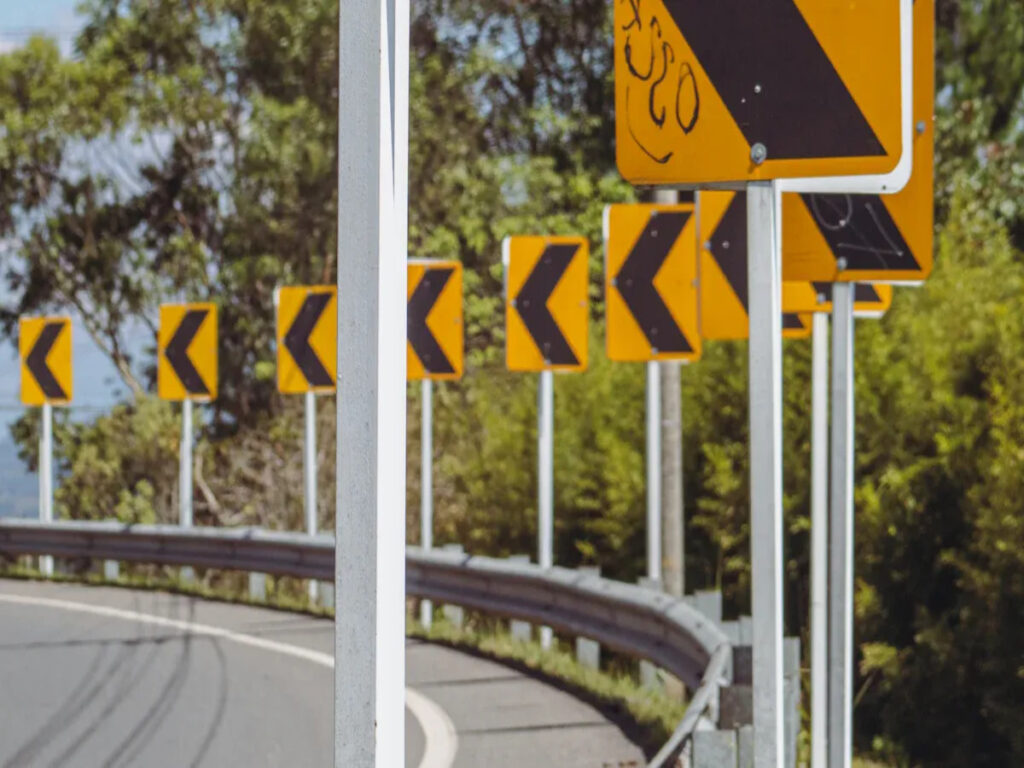
Necessidades do projeto
Escolhendo a folha de alumínio certa significa saber o que seu projeto precisa. Todo lugar para um sinal de trânsito é diferente. Rodovias precisam de ligas fortes como 5052 ou 6061. Essas ligas não enferrujam facilmente. As ruas da cidade podem usar ligas mais suaves, como 1100 ou 3003. Ligas mais suaves são mais fáceis de moldar. Sinais personalizados permitem escolher qualquer grau ou acabamento que você quiser. A tabela abaixo mostra coisas importantes para pensar:
| Fator | Detalhes |
|---|---|
| Ambiente de Aplicação | Rodovias: 5052/6061 para força; Cidades: 1100/3003 para formabilidade |
| Grau de liga | 1100/3003: econômico; 5052/6061: alta resistência e resistência à corrosão |
| Condições ambientais | Umidade, sal, e o sol requer ligas resistentes à corrosão e revestimentos UV |
| Folha reflexiva | Grau de engenheiro para não crítico; Grau de diamante para sinais de limite de parada/velocidade |
| Tratamentos de superfície | Alodine, Overlamina para proteção extra |
| Considerações de custo | As ligas mais suaves custam menos, mas precisam de mais substituições; ligas mais fortes duram mais |
A folha certa ajuda o seu sinal por último através do clima e estradas movimentadas.
Conformidade
Os sinais de trânsito devem seguir regras estritas para segurança e ser fácil de ver. Nos Estados Unidos, MUTCD Define regras para formas de sinalização, cores, e quão bem eles refletem a luz. FHWA garante que essas regras sejam seguidas. Os sinais usam especial Folha reflexiva como grau de engenheiro do tipo I, Tipo III de alta intensidade, ou grau de diamante tipo IX. Na Europa, CEN e ECMT estabelecem suas próprias regras. Ambos os lugares querem que os sinais sejam fáceis de ver à noite e com mau tempo. Seguir essas regras mantém as estradas seguras e ajuda os sinais a durar mais tempo.
Sempre verifique se as folhas de alumínio e os revestimentos seguem todas as regras locais e nacionais antes de comprar.
Sustentabilidade
A sustentabilidade é importante para novos projetos de sinais de trânsito. Alumínio com muito conteúdo reciclado economiza até 95% da energia necessária para fazer um novo alumínio. Isso reduz as emissões de carbono e ajuda as cidades a atender aos padrões de construção verde como Leed e EPA. Sinais de alumínio podem ser reciclados muitas vezes e ainda permanecem fortes. Isso ajuda a manter sinais antigos fora dos aterros. O alumínio é leve, Então ele usa menos combustível quando movido e colocado. O uso de folhas de alumínio reciclado ajuda as cidades a economizar dinheiro, proteger a natureza, e crescer de maneira verde.
Para citações personalizadas e ajuda especializada em escolher a melhor folha de alumínio, falar com A equipe da Optraffic. Eles têm muitas opções que seguem as regras e Ajude o meio ambiente.
O preço das folhas de alumínio para sinais de trânsito depende de quanto tempo elas duram, Como eles lidam com o mau tempo, e como eles afetam o ambiente. O alumínio é leve, não enferruja, e economiza dinheiro com o tempo. Isso o torna uma boa escolha para cidades e rodovias. Os gerentes de projeto precisam pensar no primeiro custo, reparos, e quando os sinais podem precisar de substituir. Escolher o material certo mantém as pessoas seguras e ajuda o planeta. Se você precisar de ajuda ou um preço especial, Empresas como Seton e Sinais agora podem dar conselhos.
Perguntas frequentes
Que espessura da folha de alumínio funciona melhor para sinais de trânsito?
A maioria dos sinais de trânsito usa folhas de 0,080 polegadas ou 1/8 polegada de espessura. Essas folhas são fortes e não se dobram facilmente. Se o sinal for grande ou em um local de vento, lençóis mais grossos funcionam melhor.
Como a quantidade do pedido afeta o preço da folha de alumínio?
Comprar mais folhas de uma só vez faz com que cada folha custe menos. Os fornecedores dão descontos para grandes pedidos. Cidades e construtores economizam dinheiro quando planejam e compram em grandes quantidades.
Quais ligas de alumínio são comuns para sinais de trânsito?
Os fabricantes escolhem ligas como 5052-H38, 6061-T6, ou 3003-H14. Essas ligas são fortes e não enferrujam. A melhor liga depende de onde vai o sinal e quão difícil precisa ser.
Os sinais de tráfego de alumínio podem ser reciclados?
Sim, você pode reciclar sinais de tráfego de alumínio. Os quintais de sucata pagam dinheiro por sinais antigos. Isso ajuda a pagar por novos sinais e suporta metas verdes para cidades e construtores.

